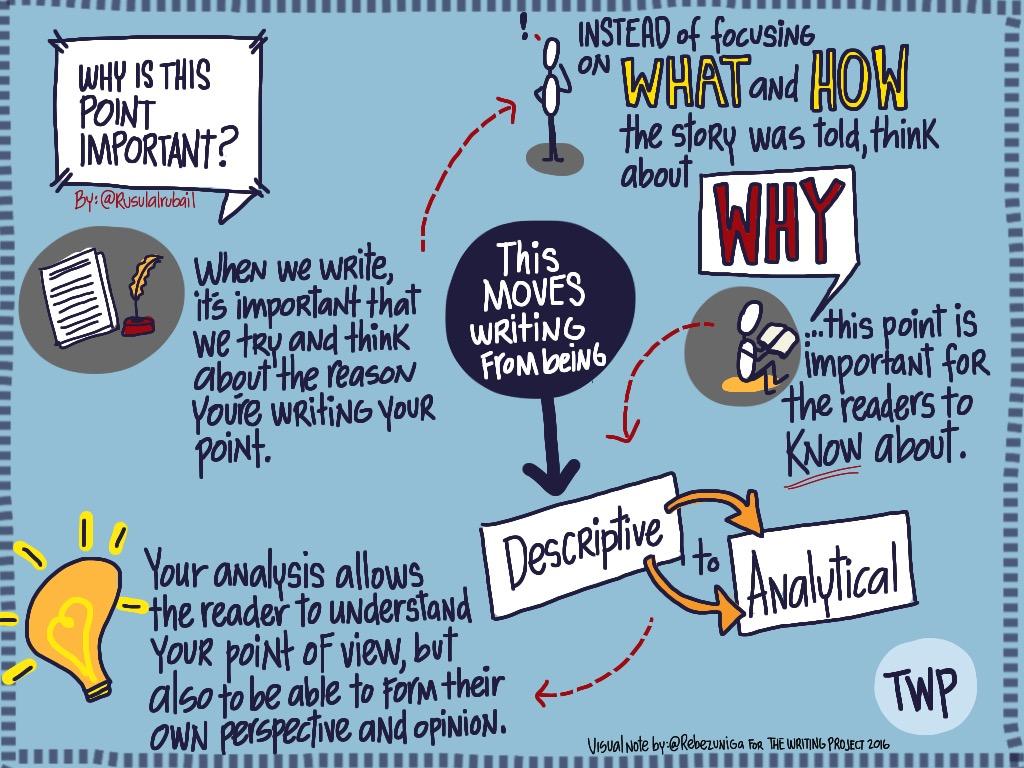
Visual styles can have a profound impact on how we perceive and interact with various elements in our day-to-day lives. From website designs to presentations and even clothing choices, the use of visual styles can communicate messages, evoke emotions, and create a visually cohesive experience. In this article, we will explore the art of using visual styles effectively, delving into the principles, techniques, and tools that can help you master this skill. Whether you are a designer, marketer, student, or simply curious about the world of visual communication, this guide will equip you with the knowledge to harness the power of visual styles and enhance your visual creations.
Introduction to Visual Styles
Visual styles play a crucial role in creating an engaging and aesthetically pleasing website or blog. By utilizing different visual elements such as colors, fonts, and layouts, you can effectively communicate your message and capture the attention of your audience. In this post, we will explore the basics of visual styles and how you can use them to enhance your online presence.
Understanding the Importance of Visual Styles:
Visual styles are like a language that speaks directly to your audience, conveying your brand identity and values. It’s essential to select a visual style that aligns with your content and resonates with your target audience. Whether you prefer a clean and minimalist design or a vibrant and adventurous one, visual styles can help you set the tone and mood of your website.Selecting the Right Color Palette:
Colors have a significant impact on the way people perceive your website. Choose a color palette that complements your brand and evokes the desired emotional response from your audience. A monochromatic color scheme creates a harmonious and sophisticated look, while a complementary color scheme uses contrasting colors to add vibrancy and energy to your design.Using Typography to Enhance Readability:
Typography is an essential element of visual styles, as it helps improve readability and user experience. Select a font that complements your brand’s personality while ensuring readability across different devices and screen sizes. Consider using a mix of font styles, such as a bold headline font paired with a clean and simple body font, to add visual interest and hierarchy to your content.Creating Consistency in Layout and Structure:
Consistency is key when it comes to visual styles. By maintaining a consistent layout and structure throughout your website, you can create a cohesive user experience. Ensure that your headers, paragraphs, and images are consistently positioned, aligned, and formatted. This will not only make your website more visually appealing but also help users navigate and consume your content more easily.Showcasing Visual Styles with WordPress:
WordPress offers a wide range of themes and plugins that can help you showcase your visual style effectively. Browse through the extensive collection of themes, and select one that best reflects your brand’s personality. From minimalistic themes to more elaborate and creative options, WordPress provides the tools you need to bring your visual style to life.
In summary, visual styles are a powerful tool that can elevate your online presence. By selecting the right color palette, typography, and layout, you can create a visually stunning and user-friendly website that leaves a lasting impression on your audience. Make use of WordPress’s features and flexibility to showcase your visual style and create a unique online experience.

Understanding the Importance of Visual Styles
Visual styles play a crucial role in creating an engaging and cohesive user experience on websites and other digital platforms. By , you can effectively utilize them to enhance the overall aesthetic appeal and usability of your content. In this post, we will explore some key considerations when using visual styles and provide practical tips to help you make the most of them.
Consistency is key:
Using visual styles consistently throughout your website or app is essential for creating a professional and polished look. This means employing the same color palette, typography, and layout across different pages and sections. Consistency helps users navigate your content more efficiently and builds brand recognition. Consider creating a style guide to ensure that everyone involved in the design process follows the established visual guidelines.Use color strategically:
Color is a powerful tool for evoking emotions and creating visual hierarchy. When deciding on a color scheme for your website, think about the mood and tone you want to convey. Use contrasting colors to highlight important elements and draw users’ attention. Accessibility should also be a top priority, so ensure that your color choices meet accessibility standards, making your content accessible to a broader audience.Typography matters:
The right typography can greatly impact the readability and aesthetics of your content. Choose fonts that match the tone and purpose of your website or app. Consider factors like legibility, line spacing, and font size to provide a comfortable reading experience. Combining different font styles can create a visual hierarchy that guides users through your content. Remember to optimize your typography for different devices and screen sizes, ensuring a consistent experience across platforms.Pay attention to layout and spacing:
An organized and well-structured layout improves clarity and makes your content more digestible. Use whitespace effectively to create breathing room between elements and sections, allowing users to navigate your content without feeling overwhelmed. Employ grid systems or responsive design techniques for a visually pleasing and harmonious layout that adapts to different screen sizes. Remember to test your design on various devices to ensure it translates well in different contexts.Visualize data with charts and tables:
Sometimes, presenting data in plain text can be overwhelming and difficult to comprehend. Visualizing data using charts and tables can make it more accessible and easier to understand. Utilize HTML tables, WordPress styling, or CSS grid to create visually appealing and responsive tables. Charts, such as bar graphs or pie charts, can quickly convey complex information in a user-friendly format. Just ensure that the visualizations are clear and support the information you are trying to communicate.
Remember, visual styles are not just about making your website or app visually appealing; they also play a crucial role in enhancing the overall user experience. By understanding and leveraging visual styles effectively, you can create a more engaging and memorable digital platform for your audience. So, take the time to carefully consider your visual choices and always strive for consistency and usability in your design.

Key Elements of Effective Visual Styles
Visual styles play a crucial role in enhancing the overall appearance and user experience of a website. By understanding the , you can create a visually appealing and engaging website that captures the attention of your visitors. Here are some important factors to consider:
Color scheme: Choosing the right colors can significantly impact the mood and perception of your website. Use a harmonious color scheme that reflects your brand identity and complements your content. Consider the psychological associations of different colors to evoke the desired emotions in your audience.
Typography: Text is a key component of any website, and selecting the right font styles and sizes can greatly enhance readability and user experience. Ensure that your typography is consistent across the site, with fonts that are easy to read on different devices. Consider using bold or italic styles to emphasize important content.
Layout and spacing: A well-structured layout can improve the overall visual flow of your website. Ensure that your content is organized in a logical manner, with sufficient spacing between elements to avoid cluttered and overwhelming designs. Utilize white space effectively to create visual hierarchy and draw attention to important elements.
Images and graphics: Visuals are powerful tools for communication and engagement. Incorporate high-quality images and graphics that are relevant to your content and enhance the overall message you want to convey. Use visual elements strategically to break up text and create visual interest.
Consistency: Consistency is key in maintaining a cohesive visual style throughout your website. Use consistent colors, fonts, and imagery across all pages to provide a seamless and professional user experience. Establishing a consistent visual style builds brand recognition and helps your audience navigate your site more easily.
By paying attention to these key elements, you can create a visually stunning website that effectively communicates your message and engages your audience. Experiment with different visual styles, but remember to remain consistent and true to your brand identity. A visually appealing website will not only attract visitors but also help to establish your online presence and leave a lasting impression.
Tips and Tricks for Using Visual Styles
Visual styles are an essential aspect of web design, as they play a significant role in enhancing the overall aesthetics and user experience. Whether you are a beginner or an experienced designer, these tips and tricks will help you make the most of visual styles and elevate your website’s appearance.
Choose a visually appealing color palette: Colors greatly influence the user’s perception of your website. Opt for a cohesive color scheme that reflects your brand’s personality and resonates with your target audience. Using WordPress’s built-in customizer, you can easily customize the colors of various elements such as headers, backgrounds, buttons, and more.
Implement eye-catching imagery: Visual elements like images and graphics are powerful tools to capture visitors’ attention and convey your message effectively. Make sure to optimize your images for the web by compressing them and choosing the appropriate file format. WordPress makes it convenient to upload and manage images, allowing you to easily add captivating visuals to your website.
Pay attention to typography: Fonts play a crucial role in visual styles, as they determine the tone and readability of your content. Select fonts that align with your website’s overall look and feel, considering both aesthetics and legibility. WordPress provides a wide range of fonts to choose from and allows you to further customize your typography using plugins or CSS.
Utilize white space effectively: White space, also known as negative space, refers to the empty areas between elements on a webpage. Strategic use of white space can enhance readability, bring attention to important elements, and create a clean and uncluttered design. Experiment with the spacing between different elements on your website to find a balance that suits your visual style.
Maintain consistency throughout: Consistency is key when it comes to visual styles. Ensure that your design elements, such as colors, fonts, and layout, remain consistent across all pages of your website. This creates a cohesive and professional look, making it easier for users to navigate and engage with your content. WordPress’s templates and themes allow you to maintain consistency effortlessly.
In conclusion, visual styles are vital for creating an appealing and user-friendly website. By following these tips and tricks, you can create a visually stunning design that leaves a lasting impression on your visitors. Experiment, be creative, and keep refining your visual style to continuously improve the overall user experience.
Q&A
Q: What are visual styles?
A: Visual styles are a set of customizable design elements that can be applied to enhance the appearance of various digital media such as websites, presentations, and documents. They help establish a consistent look and feel, making the content visually appealing and engaging.
Q: How can visual styles improve the overall presentation of information?
A: Visual styles play a crucial role in organizing and presenting information effectively. By using consistent fonts, colors, shapes, and layout patterns, visual styles make it easier for the audience to understand and retain information. They also create a sense of professionalism and credibility.
Q: Where can visual styles be applied?
A: Visual styles can be applied to a wide range of digital media, including but not limited to websites, presentations, reports, infographics, social media graphics, and even marketing materials like posters, flyers, and brochures.
Q: How can one choose the appropriate visual style for their content?
A: Choosing the right visual style largely depends on the purpose, audience, and context of your content. You should consider factors such as the tone of your message, brand guidelines (if applicable), and the nature of the content itself. Additionally, conducting some research and gathering inspiration from existing visual designs can help you make informed decisions.
Q: What are some key elements of visual styles to consider?
A: Visual styles consist of several key components. Typography, or the choice of fonts, plays a vital role in setting the overall tone and readability of the content. Color schemes are also essential as they evoke specific emotions and help to visually distinguish different elements. Consistent use of shapes, icons, and images can further enhance the visual appeal and provide visual cues. Additionally, the layout and spacing of elements contribute to the overall flow and readability.
Q: Should visual styles be consistent across different platforms?
A: Yes, maintaining consistency across various platforms is important to create a strong visual identity for your content or brand. Consistency instills familiarity, making it easier for your audience to recognize and connect with your content regardless of the platform they encounter it on. Moreover, consistency helps in building trust and recognition by reinforcing the brand image.
Q: What are some tools or software that can help in applying visual styles?
A: There are numerous tools and software available to assist in applying visual styles. Popular graphic design software like Adobe Photoshop, Illustrator, and InDesign provide extensive features and customization options. Additionally, online tools such as Canva and Piktochart offer pre-designed templates and easy-to-use interfaces for users who might not have professional design skills.
Q: Are there any best practices to keep in mind while using visual styles?
A: Absolutely. Some best practices to consider include:
- Keep it simple and avoid cluttered designs.
- Ensure readability by choosing appropriate font sizes and contrast.
- Use colors strategically to highlight important information.
- Maintain consistency in typography, color, and element sizes.
- Test your visual styles across different devices to ensure compatibility and responsiveness.
Q: Can visual styles be updated or modified over time?
A: Yes, visual styles can be updated or modified as per the changing trends, brand guidelines, or to meet specific objectives. It is important to periodically evaluate the effectiveness of your visual styles and make necessary adjustments to keep them fresh and aligned with your goals. However, it is crucial to strike a balance between maintaining consistency and incorporating necessary updates. In conclusion, understanding and utilizing visual styles can greatly enhance the aesthetic appeal and overall experience of your design projects. By following the step-by-step guide provided in this article, you have learned the fundamentals of utilizing visual styles effectively, from choosing the appropriate color palettes to incorporating consistent typography and imagery.
Remember, visual styles are not just about making your designs visually attractive; they also play a crucial role in conveying the right message and creating a cohesive identity for your brand or project.
So take your time to experiment, get inspired by existing visual styles, and tailor them to suit your unique needs. Whether you are designing a website, creating a presentation, or developing a marketing campaign, visual styles will undoubtedly prove to be invaluable tools in achieving professional and visually stunning results.
By implementing these techniques and harnessing the power of visual styles, your designs will capture the attention, engage the audience, and effectively communicate your desired message. So, go ahead and start exploring the world of visual styles. Happy designing!






